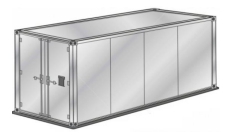Buoyancy is the phenomenon that allows objects to float or be pushed upward when immersed in a liquid. This occurs due to a force known as the buoyant force, denoted as \( F_b \). The buoyant force arises from a pressure difference between the top and bottom of an object submerged in a liquid. As depth increases, pressure also increases, resulting in a greater force acting on the bottom of the object compared to the top. This difference in pressure leads to a net upward force, which is the buoyant force.
One of the fundamental principles related to buoyancy is Archimedes' principle, which states that the magnitude of the buoyant force is equal to the weight of the liquid displaced by the object. To express this concept mathematically, the buoyant force can be calculated using the equation:
\[ F_b = \rho_{liquid} \cdot g \cdot V_{under} \]
In this equation, \( \rho_{liquid} \) represents the density of the liquid, \( g \) is the acceleration due to gravity (approximately \( 9.8 \, \text{m/s}^2 \) on Earth), and \( V_{under} \) is the volume of the object that is submerged in the liquid. It is crucial to note that the density used in this equation is that of the liquid, not the object itself. The volume considered is only the portion of the object that is underwater, which can differ from the object's total volume.
Understanding density is also essential, as it is defined as the mass of an object divided by its total volume:
\[ \text{Density} = \frac{mass_{total}}{volume_{total}} \]
In buoyancy problems, it is common to analyze forces using the equilibrium condition, where the sum of all forces acting on an object equals zero. This is often represented as:
\[ \sum F = 0 \]
In many cases, the object will be at rest, leading to a situation where the buoyant force equals the weight of the object:
\[ F_b = mg \]
By substituting the expression for buoyant force into this equation, we can derive relationships between the densities and volumes of the object and the liquid. For example, if an object is fully immersed and then reaches equilibrium with a portion above the water, the volume submerged can be expressed as a percentage of the total volume. If 30% of the object is above water, then 70% is submerged, which is critical for calculations.
In summary, buoyancy is a key concept in fluid mechanics, governed by the principles of pressure differences and Archimedes' principle. Understanding how to calculate buoyant force and the relationships between mass, volume, and density is essential for solving buoyancy-related problems effectively.



